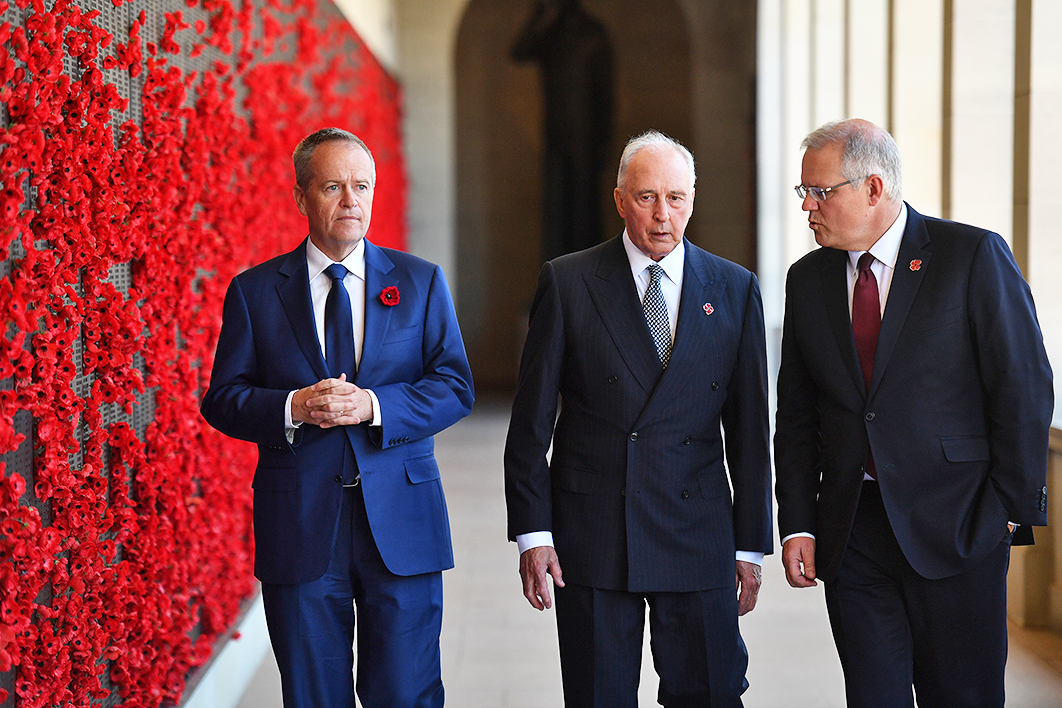As the year drags to a close, experienced politics-watchers, the people who have been haunting the political sphere for decades and are intimate with all its psychological nooks and crannies, can divine a big Labor victory in 2019. The walls of Parliament House exude it. Senior public servants can smell it on ministers — that unmistakable stench of decay, of a government on the way out.
Just kidding. What gives commentators such confidence are the opinion polls, and particularly the most-watched Newspoll, which week after week, fortnight after fortnight, show the government a mile behind — this month by around 46–54 after preferences. And the polls drive not just media perceptions and reporting, but also the behaviour of the political players, which in turn influences the polls.
So can the Coalition government recover from these disastrous numbers?
Some Coalition diehards cling to the superiority of Scott Morrison’s personal ratings over Bill Shorten’s as harbingers of a possible recovery. But history shows that, if anything, the opposite is the case: the leader with low ratings usually improves in the voting-intention figures as election day approaches, and the popular one deflates.
Perhaps the most dramatic recent example came at the June 2017 British election. Only a month before polling day, Theresa May’s approval ratings were twice Jeremy Corbyn’s and the Conservatives led Labour by at least fifteen points. On the day, the Tories scraped into minority government with national support of just 2.4 per cent more than Labour’s.
(And, in a note for Australians determined to overlay state results onto federal ones, a Conservative landslide at local council elections the previous month had prompted headlines such as this from the Telegraph: “Corb-tamination! Local Elections Show that the Tory Wave Is Coming to Sweep Jeremy Corbyn Away.”)
The clearest recent Australian example was 2010, when the preferred/better prime minister and approval/satisfaction numbers for the newly installed Julia Gillard were almost double those for opposition leader Tony Abbott in mid July, and Labor’s voting intentions were around eight points clear of the Coalition’s. Five weeks later the election was a virtual tie, at 50.1–49.9.
So there is nothing in the minutiae of the public numbers to cheer the government.
But if we look hard enough they can find reasons to be, if not cheerful, then hopeful.
• Under Malcolm Turnbull in mid 2018, the government was quite competitive, nudging into 49 per cent after preferences. Yes, Turnbull has gone, but that background suggests potential for improvement.
• Because they’re using election 2016 preference flows, most pollsters (though not Newspoll) are very likely overstating One Nation preference flows to Labor. Back then, One Nation preferenced Labor or ran split tickets in most seats. That won’t happen again. Furthermore, many of the respondents telling pollsters they’ll vote for the minor party today will find it absent from their ballot paper on election day, and a lot of them will vote Coalition instead. This will only make a difference around the edges, but every little bit counts.
• While it is probably true that no government has come back from the poll position the Coalition finds itself in today, some governments have made recoveries of a magnitude that could get Morrison over the line. From January to October 2007, for example, the Howard government averaged a two-party-preferred 43 per cent in Newspoll, and bottomed at 39 per cent. On election day in November that year, it received 47.3 per cent. That’s still a bad loss, but if that kind of shift happened next year it would put this government — whose average in the latest Newspoll quarterly was 46 per cent, and whose lowest figure has been 44 per cent — at around 50 per cent.
• Eroding partisan loyalty over the decades has seen growing voter volatility. The Keating government’s recovery and win in 1993 was unprecedented, and then, in 2001, the Howard government’s was. The comebacks are getting bigger.
• Perhaps most importantly, Labor is taking some big items to the election, particularly its proposed changes to superannuation and a housing policy that involves alterations to capital gains tax and negative gearing. As fine as these plans might be, they are excellent fodder for a scare campaign. Particularly with a softening housing market in Sydney and Melbourne, the message that the value of your house will drop even more under Labor, perhaps causing a recession, is potentially powerful.
Morrison, so wily at manipulating his party room, has so far proved a lemon at the retail side of politics. He would be wise to give up all that daggy bloke-next-door schtick, the cringe-inducing desperation to connect with voters, and get serious about the art of negative politics and mount a 1993-style scare campaign.
Morrison is no Paul Keating, and a change of government remains likely in 2019, but if the unexpected does transpire, expect the phrase “Labor’s GST” to enter the political lexicon. •





